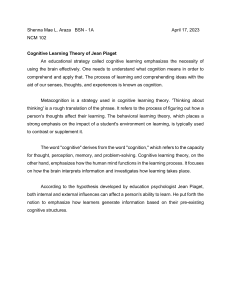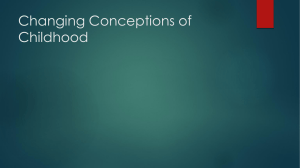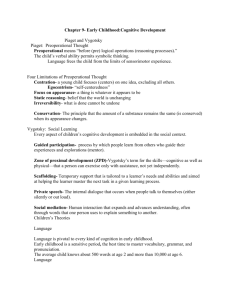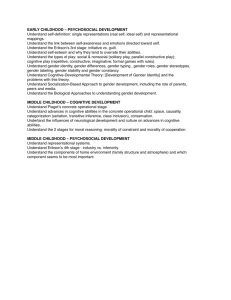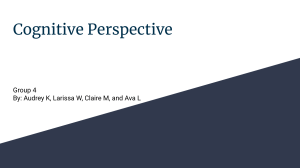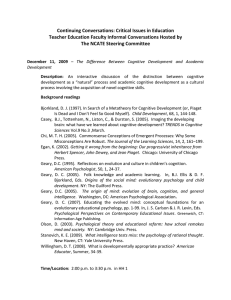C5_Critical Thinking Questions
advertisement
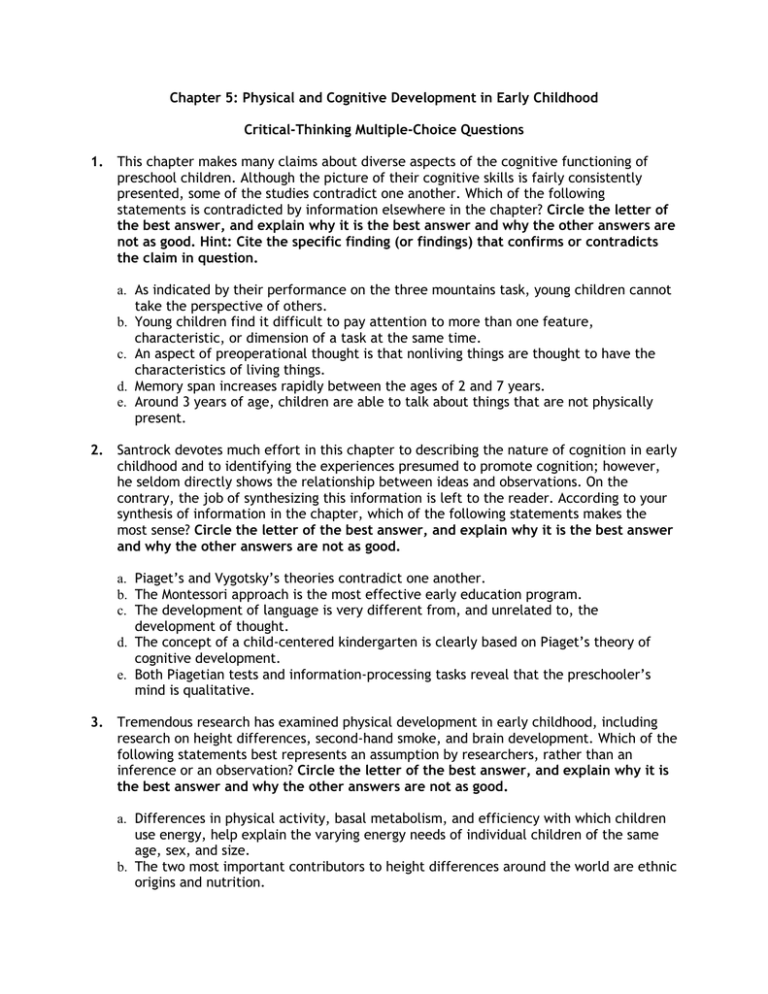
Chapter 5: Physical and Cognitive Development in Early Childhood Critical-Thinking Multiple-Choice Questions 1. This chapter makes many claims about diverse aspects of the cognitive functioning of preschool children. Although the picture of their cognitive skills is fairly consistently presented, some of the studies contradict one another. Which of the following statements is contradicted by information elsewhere in the chapter? Circle the letter of the best answer, and explain why it is the best answer and why the other answers are not as good. Hint: Cite the specific finding (or findings) that confirms or contradicts the claim in question. a. As indicated by their performance on the three mountains task, young children cannot take the perspective of others. b. Young children find it difficult to pay attention to more than one feature, characteristic, or dimension of a task at the same time. c. An aspect of preoperational thought is that nonliving things are thought to have the characteristics of living things. d. Memory span increases rapidly between the ages of 2 and 7 years. e. Around 3 years of age, children are able to talk about things that are not physically present. 2. Santrock devotes much effort in this chapter to describing the nature of cognition in early childhood and to identifying the experiences presumed to promote cognition; however, he seldom directly shows the relationship between ideas and observations. On the contrary, the job of synthesizing this information is left to the reader. According to your synthesis of information in the chapter, which of the following statements makes the most sense? Circle the letter of the best answer, and explain why it is the best answer and why the other answers are not as good. a. Piaget’s and Vygotsky’s theories contradict one another. b. The Montessori approach is the most effective early education program. c. The development of language is very different from, and unrelated to, the development of thought. d. The concept of a child-centered kindergarten is clearly based on Piaget’s theory of cognitive development. e. Both Piagetian tests and information-processing tasks reveal that the preschooler’s mind is qualitative. 3. Tremendous research has examined physical development in early childhood, including research on height differences, second-hand smoke, and brain development. Which of the following statements best represents an assumption by researchers, rather than an inference or an observation? Circle the letter of the best answer, and explain why it is the best answer and why the other answers are not as good. a. Differences in physical activity, basal metabolism, and efficiency with which children use energy, help explain the varying energy needs of individual children of the same age, sex, and size. b. The two most important contributors to height differences around the world are ethnic origins and nutrition. c. Exposure to tobacco smoke increases children’s risk for developing a number of medical problems. d. Children’s brains experience rapid, distinct spurts of growth. e. Myelination is important in the maturation of a number of children’s abilities.

